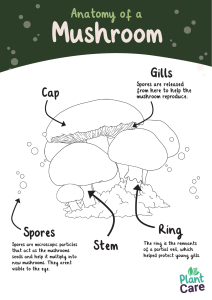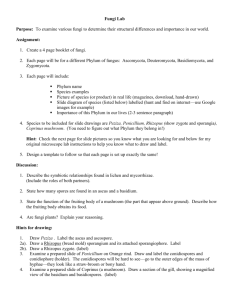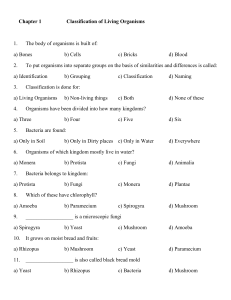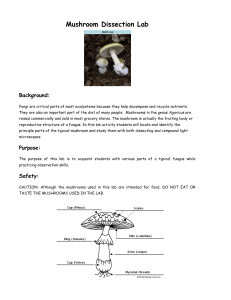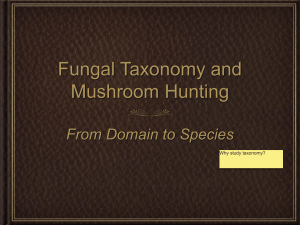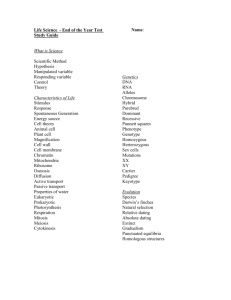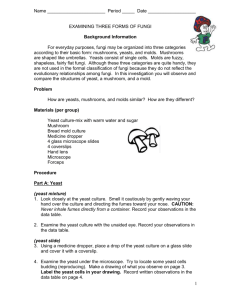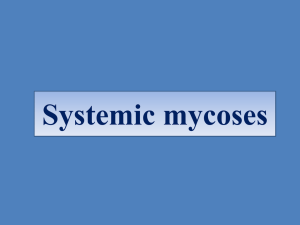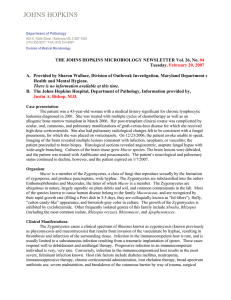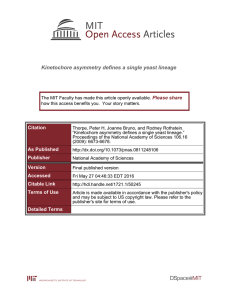Fungi Lab Name
advertisement
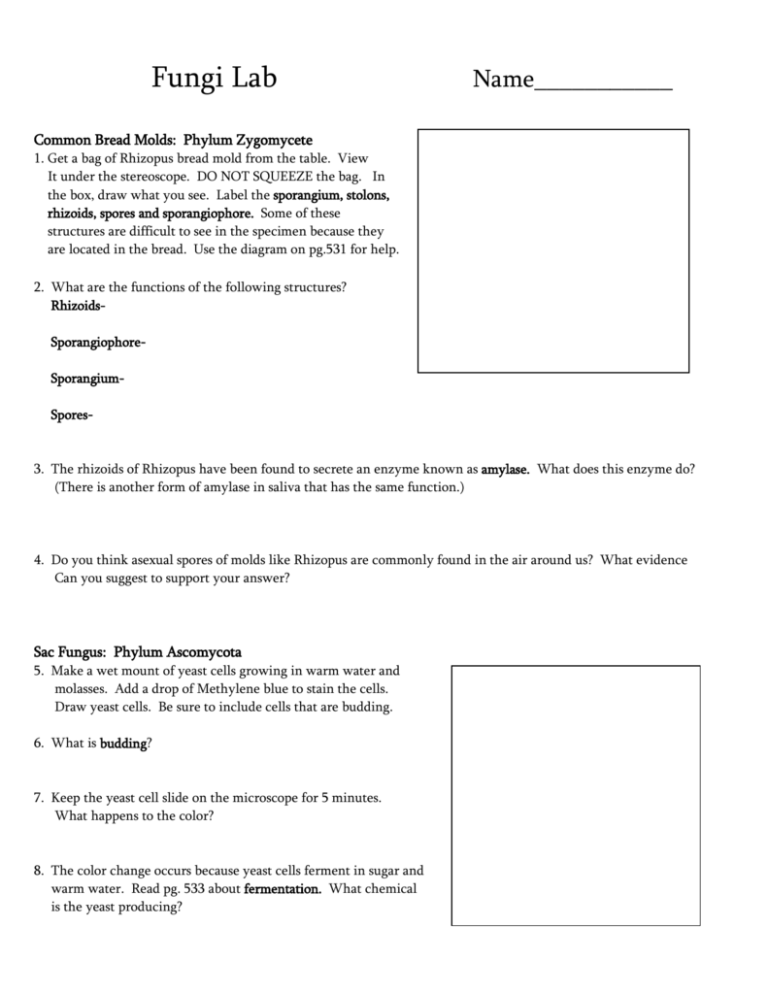
Fungi Lab Name___________ Common Bread Molds: Phylum Zygomycete 1. Get a bag of Rhizopus bread mold from the table. View It under the stereoscope. DO NOT SQUEEZE the bag. In the box, draw what you see. Label the sporangium, stolons, rhizoids, spores and sporangiophore. Some of these structures are difficult to see in the specimen because they are located in the bread. Use the diagram on pg.531 for help. 2. What are the functions of the following structures? RhizoidsSporangiophoreSporangiumSpores- 3. The rhizoids of Rhizopus have been found to secrete an enzyme known as amylase. What does this enzyme do? (There is another form of amylase in saliva that has the same function.) 4. Do you think asexual spores of molds like Rhizopus are commonly found in the air around us? What evidence Can you suggest to support your answer? Sac Fungus: Phylum Ascomycota 5. Make a wet mount of yeast cells growing in warm water and molasses. Add a drop of Methylene blue to stain the cells. Draw yeast cells. Be sure to include cells that are budding. 6. What is budding? 7. Keep the yeast cell slide on the microscope for 5 minutes. What happens to the color? 8. The color change occurs because yeast cells ferment in sugar and warm water. Read pg. 533 about fermentation. What chemical is the yeast producing? Club Fungi: phylum Basidiomycota 9. Examine a whole mushroom. Draw and label the mushroom parts: cap, gills, stalk, base 10. Define basidia: 11. Approximately how many gills are in your mushroom? 12. Assume: A. Each basidia contains 1000 spores. B. Each gill contains 1000 basidia. Using these assumptions, how many spores will your mushroom produce? Lichens: A symbiotic relationship 13. Define symbiosis: 14. What are the two organisms in lichen? What does each organism do for the other? (pg. 540) 15. Explain how lichen can grow on a rock. 16. Figure 21-15 in your text shows the 3 different types of lichen. Find one example of each specimen from the collection at the front of the classroom and draw each type. Crustose Foliose Fruticose
